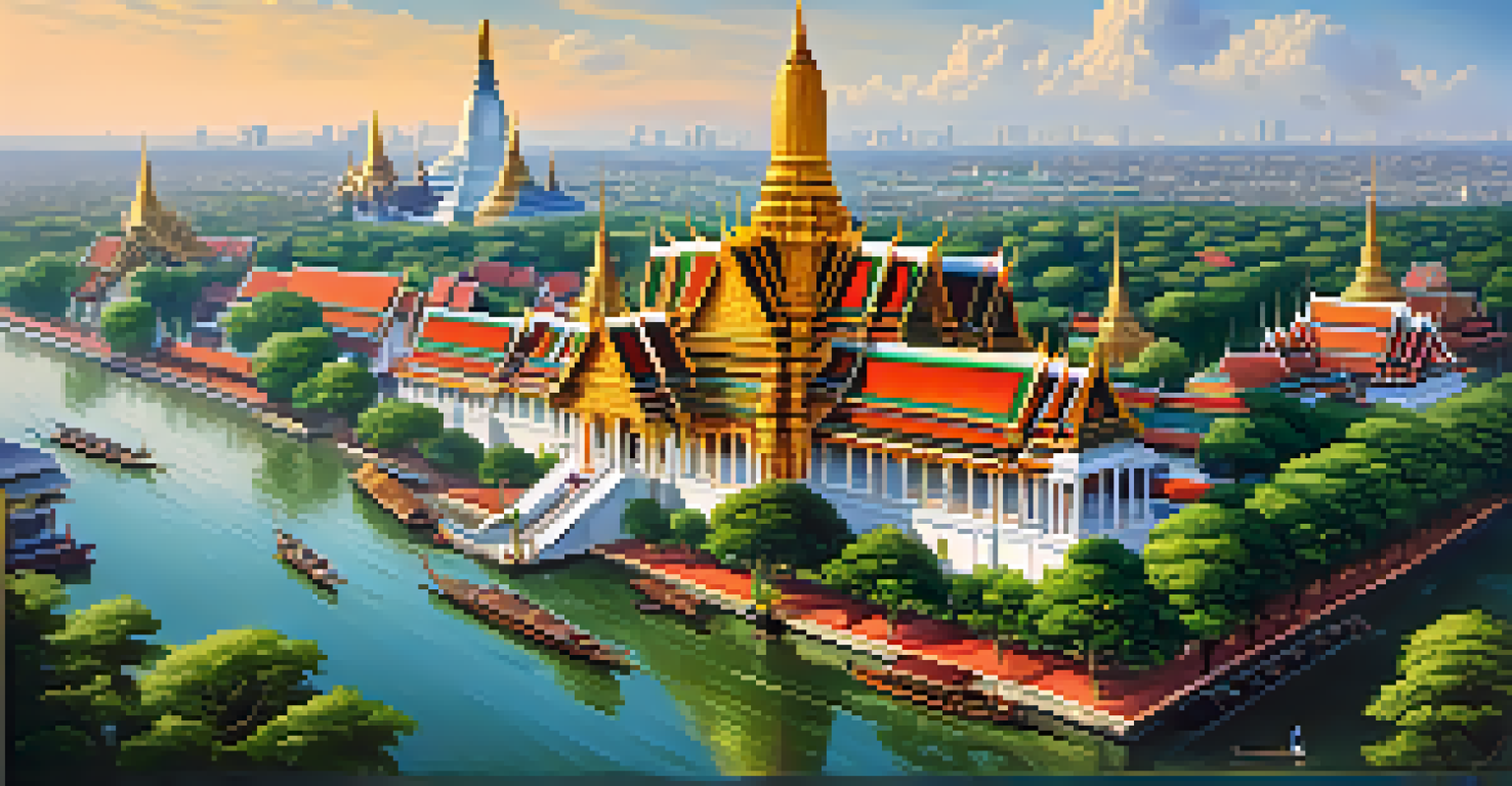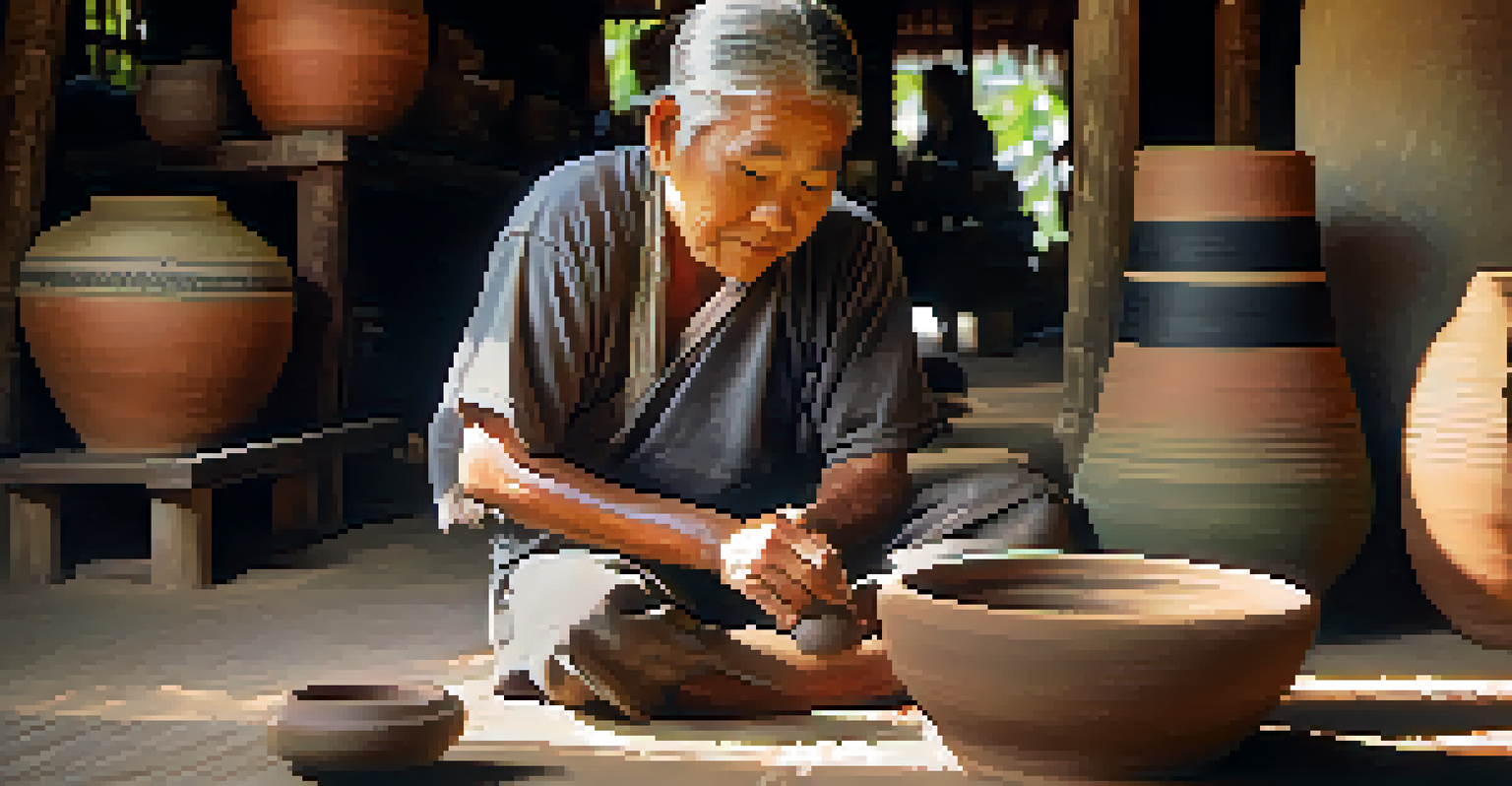Impact of Tourism on Thailand's Cultural Heritage Conservation

Understanding Thailand's Rich Cultural Heritage
Thailand is renowned for its vibrant culture, steeped in history and tradition. From the intricate designs of its temples to the colorful festivals celebrated throughout the year, the country's heritage is a tapestry woven from centuries of influence. This richness not only attracts tourists but also serves as a point of pride for locals, creating a unique blend of reverence and curiosity.
Travel is fatal to prejudice, bigotry, and narrow-mindedness, and many of our people need it sorely on these accounts. Broad, wholesome, charitable views of men and things cannot be acquired by vegetating in one little corner of the earth all one’s lifetime.
However, with millions of visitors each year, the pressure on cultural sites can be immense. Popular destinations like the Grand Palace in Bangkok or the ancient city of Ayutthaya often see overwhelming crowds. This influx raises questions about how to balance tourism with the preservation of these invaluable cultural assets, ensuring they remain intact for future generations.
As we dive deeper into this topic, we'll explore both the positive and negative impacts of tourism on Thailand's cultural heritage conservation efforts. By understanding this relationship, we can better appreciate how tourism shapes not just the economy, but also the identity of a nation.
Economic Benefits of Tourism to Cultural Sites
Tourism is a significant economic driver in Thailand, with cultural sites often being the main attraction. Revenue generated from entrance fees, guided tours, and local crafts helps fund the maintenance and restoration of historical sites. This financial support is crucial in preserving the cultural integrity of these landmarks, allowing them to be enjoyed by both locals and visitors alike.

Moreover, tourism creates job opportunities in various sectors, from hospitality to artisanal crafts. This economic boost can lead to greater community investment in cultural preservation, as locals recognize the value of their heritage in attracting visitors. For instance, communities around Chiang Mai have embraced their traditions, offering workshops that blend cultural education with economic sustainability.
Balancing Tourism and Preservation
Tourism significantly boosts Thailand's economy, but it also poses challenges for the preservation of cultural heritage sites.
However, it’s important to note that not all economic impacts are positive. Over-commercialization can sometimes overshadow authentic cultural experiences, leading to a dilution of traditions. Striking a balance between revenue generation and genuine cultural representation is key to sustainable tourism.
Challenges of Over-Tourism on Cultural Sites
While tourism brings economic benefits, it also poses significant challenges, particularly over-tourism. Popular sites can become overcrowded, leading to physical wear and tear on historical structures. For example, the ancient city of Ayutthaya has faced damage from both foot traffic and pollution, raising alarms about the long-term sustainability of such treasured sites.
The traveler sees what he sees. The tourist sees what he has come to see.
Additionally, the cultural significance of these sites can be compromised when they become mere photo ops for tourists. This shift can lead to a loss of cultural narratives, as the deeper meanings behind rituals and traditions may be overlooked in favor of superficial experiences. The essence of a culture can sometimes get lost in the rush to capture the perfect Instagram shot.
Addressing these challenges requires innovative solutions, such as limiting visitor numbers or promoting lesser-known sites. By diversifying tourist experiences, we can mitigate the impact on popular destinations while still celebrating the rich culture of Thailand.
Community Involvement in Cultural Preservation
Community involvement is crucial for the successful conservation of cultural heritage sites. Local communities often hold the key to maintaining traditions and practices that keep their culture alive. By engaging residents in tourism planning, their insights can help balance visitor needs with cultural preservation efforts.
For instance, some villages in Thailand have launched community-based tourism initiatives. These programs encourage visitors to partake in authentic cultural experiences, such as traditional cooking classes or craft workshops. This not only provides an income for locals but also fosters a deeper understanding of Thai culture among tourists.
Community Engagement is Key
Involving local communities in tourism planning enhances cultural preservation and fosters a deeper understanding of traditions.
Furthermore, local involvement can cultivate a sense of pride and ownership over cultural heritage. When communities see the direct benefits of tourism, they are more likely to invest in preserving their traditions, ensuring that their unique identity is cherished and passed down through generations.
Role of Government in Cultural Heritage Conservation
The Thai government plays a pivotal role in cultural heritage conservation, particularly in the context of tourism management. Policies and regulations are essential to ensure that tourism development aligns with preservation goals. For example, the Ministry of Culture has implemented guidelines for maintaining historical sites, balancing tourist access with conservation needs.
In addition to regulatory measures, government initiatives can promote awareness about the importance of cultural heritage. Educational campaigns can help both locals and tourists appreciate the significance of preserving cultural sites, fostering a collective responsibility towards conservation efforts. This awareness can lead to more respectful tourism practices.
However, challenges remain in enforcing these regulations effectively. With the complexities of managing diverse tourism interests, continuous dialogue between government bodies, local communities, and tourism stakeholders is vital for finding common ground that supports both economic growth and heritage conservation.
Sustainable Tourism Practices for Cultural Preservation
Sustainable tourism practices are essential for protecting Thailand's cultural heritage. This means promoting responsible travel behaviors among tourists, encouraging them to respect local traditions and environments. Simple actions, like following guidelines at cultural sites or supporting local businesses, can significantly impact preservation efforts.
Moreover, fostering eco-friendly initiatives can help minimize the environmental footprint of tourism. For example, promoting the use of public transportation or encouraging visitors to explore off-the-beaten-path destinations can reduce congestion at popular sites. This not only helps protect these sites but also enhances the overall visitor experience.
Sustainable Practices for the Future
Implementing sustainable tourism practices is essential for protecting Thailand's cultural heritage while accommodating growing visitor numbers.
Collaboration between government, businesses, and communities is crucial in developing sustainable tourism strategies. By working together, stakeholders can create a framework that supports cultural preservation while still allowing tourists to engage meaningfully with Thailand's rich heritage.
Future of Tourism and Cultural Heritage in Thailand
Looking ahead, the future of tourism and cultural heritage conservation in Thailand is both promising and challenging. As the world continues to embrace travel, the need for sustainable practices will become increasingly important. The ability to adapt to changing tourism trends while prioritizing cultural preservation will be critical for maintaining Thailand's unique identity.
Innovation can play a key role in this transition. Technology, such as virtual reality tours, can provide alternative ways for people to experience cultural sites without physical damage. Additionally, enhancing online platforms for promoting lesser-visited sites can help distribute tourist traffic more evenly across the country.

Ultimately, a collaborative approach that includes the voices of local communities, government, and tourists will shape the future of Thailand's cultural heritage. By working together, we can ensure that the beauty and richness of Thailand's traditions are preserved for generations to come.